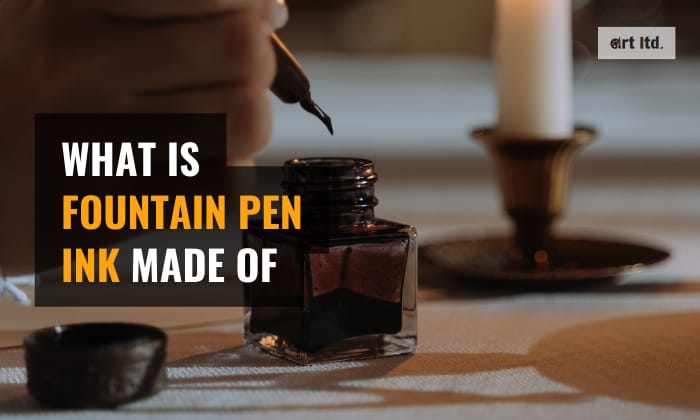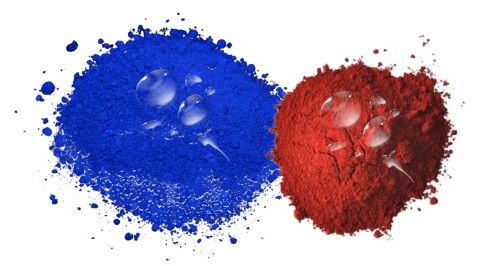Fountain pens are elegant and versatile writing instruments that can produce beautiful and expressive strokes on paper. But what exactly is the liquid that flows from these pens and gives them their distinctive character?
What is fountain pen ink made of? Fountain pen ink normally contains dyes, water, and other pen ink ingredients. These additives can vary depending on the type, color, and quality of the ink, but they usually include surfactants, pH modifiers, biocides, and sometimes pigments.
The composition of fountain pen ink affects its flow, drying time, permanence, and compatibility with different pens and papers. Read on to know.
Table of Contents
Composition of Fountain Pen Ink
Fountain pen ink is not a simple mixture of water and dye. It is a complex solution that has to balance several factors to ensure a smooth and satisfying writing experience.
Let’s find out how fountain pen ink is made.
The main components of fountain pen ink chemical composition are:
1. Dye/Pigment
Dye is the main fountain pen ink chemical composition that gives ink its distinctive color.
They are soluble in water and can create a wide range of hues and shades. Some common dye-based fountain pens can use triarylmethane dyes (for blue ink), eosin dyes (for red ink), and acid dyes (for various colors).
Dyes can also react with different pH levels and paper materials, resulting in color changing or fading over time.
2. Water
Water is the solvent that dissolves the dyes and other additives in the ink. It also affects the flow, drying time, and wetness of the ink. Water-based inks are preferred for fountain pens because they are less likely to clog or corrode the delicate parts of the pen.
However, water-based inks are also more prone to evaporation, mold growth, and bleeding or feathering on paper.
3. Surfactants
Surfactants are substances that reduce the surface tension of the ink, allowing it to flow more easily through the pen and onto the paper. They also help to disperse the dyes evenly in the solution and prevent them from settling or separating.
Some common surfactants used in fountain pen ink are sodium lauryl sulfate, sodium dodecylbenzene sulfonate, and polyethylene glycol.
4. pH Adjusters
pH adjusters are also called pH modifiers or buffers. As their name implies, they are additives that adjust the acidity or alkalinity of the ink. The pH level of the ink can affect its color, stability, and compatibility with different pens and papers.
Most fountain pen inks have a neutral or slightly acidic pH, ranging from 5 to 8. However, some inks may have a higher or lower pH depending on their formulation or purpose.
For example, iron gall inks have a low pH (around 2) because they contain iron salts and tannic acid that react with paper to create a permanent black color.
Humectants
Humectant is one of the ink elements that allows moisture retention and slows the drying of the ink.
By maintaining the ink’s moisture level, humectants ensure smooth and consistent ink flow, enabling a seamless writing experience. They also play a crucial role in preventing ink clogs or blockages that could disrupt the ink’s flow through the pen nib, allowing fountain pens to work efficiently for extended periods.
The most common humectant used in fountain pen ink is glycerin, which is a clear, odorless, and viscous liquid that is derived from plant or animal sources. Glycerin can attract and retain water molecules, which prevents the ink from evaporating or crystallizing.
However, the amount of glycerin in fountain pen ink has to be carefully balanced, as too much or too little can affect the performance of the ink.
Biocides
Biocides are additives that prevent fungal and bacterial growth in the ink. They are necessary because water-based inks can provide a favorable environment for microorganisms to thrive, especially if they are stored for a long time or exposed to air or light.
Some of the most commonly used biocides in fountain pen ink are 2-phenoxyethanol, methylparaben, and propylparaben. These are synthetic compounds that have broad-spectrum antimicrobial activity and low toxicity.
5. Anti-foaming Agents
Anti-foaming agents are additives that reduce the formation of bubbles or foam in fountain pen ink. They are also called defoamers or antifoam agents.
Foam can cause problems in ink flow, surface coating, and container filling. It can also trap air and affect the color and stability of the ink. Anti-foaming agents are usually insoluble oils, silicones, alcohols, stearates, glycols, or waxes that have surface-active properties and low viscosity.
They spread rapidly on the foamy surface and destabilize the foam lamellas, causing them to rupture and release the trapped air. They also prevent further foam formation by reducing the surface tension of the ink.
These are some of the main ingredients in ink that make up fountain pen ink. However, there is no single ink chemistry formula that applies to all fountain pen inks.
Different brands and types of inks may have different proportions and combinations of these ingredients, resulting in different characteristics and performance.
Conclusion
That’s all you need to know about “What is fountain pen ink made of?” Fountain pen ink is made of various ingredients that work together to create a fluid that can flow smoothly from a pen and produce beautiful colors on paper.
Fountain pen ink can also vary in type, quality, and performance depending on its composition and purpose.
It is a wonderful way to express yourself and enjoy the art of writing. You can experiment with mixing your own inks or using different pens and papers to see how they affect the writing experience.
Related tips and tricks:

Art has always been a part of my life; it influences my upbringing and later my career choice. For me, it is always a part of my parenting technique. So for whichever purpose that you come to art, you can start here with us.





